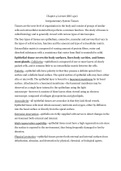Exam (elaborations)
NUR 120 PAIN EXAM QUESTIONS WITH CORRECT VERIFIED SOLUTIONS 100% GUARANTEED PASS
- Course
- NURS 120
- Institution
- West Coast University
NUR 120 PAIN EXAM QUESTIONS WITH CORRECT VERIFIED SOLUTIONS 100% GUARANTEED PASSNUR 120 PAIN EXAM QUESTIONS WITH CORRECT VERIFIED SOLUTIONS 100% GUARANTEED PASSNUR 120 PAIN EXAM QUESTIONS WITH CORRECT VERIFIED SOLUTIONS 100% GUARANTEED PASSNUR 120 PAIN EXAM QUESTIONS WITH CORRECT VERIFIED SOLUTIONS...
[Show more]










